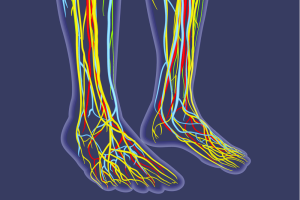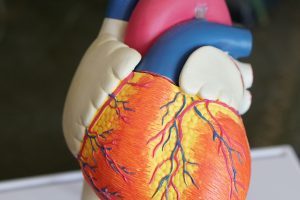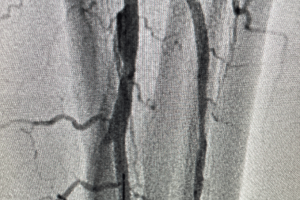The heart never takes a break. The heart is a strong muscle that never stops exercising, not for a minute. Every minute it needs blood, nourishment and oxygen. At Amarillo Heart Institute, we understand the importance of keeping your heart healthy and functioning at its best. We believe that a healthy heart is the foundation of a healthy life, and our goal is to provide you with all you need to achieve optimal heart health, a happier heart.
Other Diseases
Diabetes
Diabetes is a chronic condition in which the body is unable to properly regulate blood sugar (glucose) levels. Glucose is a sugar that is the body’s primary source of energy. In order to use glucose, the body needs a hormone called insulin, which is produced by the pancreas.
There are two main types of diabetes:
- Type 1 diabetes: This is an autoimmune disease in which the body’s immune system attacks and destroys the cells in the pancreas that produce insulin. Type 1 diabetes usually develops in childhood or adolescence, and requires lifelong insulin therapy.
- Type 2 diabetes: This is a metabolic disorder in which the body becomes resistant to insulin or doesn’t produce enough insulin. Type 2 diabetes is more common and is often linked to lifestyle factors such as obesity, lack of physical activity, and poor diet. It can often be managed with a combination of medication, lifestyle changes, and sometimes insulin therapy.
Symptoms of diabetes can include increased thirst and hunger, frequent urination, fatigue, blurred vision, slow healing of cuts and wounds, and tingling or numbness in the hands or feet.
Complications of diabetes can include nerve damage, kidney damage, eye damage, and an increased risk of heart disease and stroke. Managing blood sugar levels through medication, diet, and lifestyle changes is essential to reducing the risk of complications and improving overall health.
To further information about Diabetes, check the section Risk Factors.
Obesity
Obesity is a medical condition characterized by excessive body fat that can lead to negative health outcomes. It is typically defined by a body mass index (BMI) of 30 or higher, which is calculated by dividing a person’s weight in kilograms by their height in meters squared.
Obesity can result from a combination of genetic, environmental, and behavioral factors. In many cases, it is linked to lifestyle factors such as a diet high in calories and low in nutrients, lack of physical activity, and poor sleep habits.
Obesity is a major risk factor for a variety of health problems, including type 2 diabetes, heart disease, stroke, high blood pressure, sleep apnea, and certain types of cancer.
Treatment for obesity typically involves a combination of lifestyle changes, such as increasing physical activity and adopting a healthy diet, and, in some cases, medication or surgery. Weight loss can be challenging, but losing just 5-10% of body weight can significantly improve health outcomes and reduce the risk of obesity-related complications.
To further information about Obesity, or Body Mass Index Calculator, check Risk Factors.
Hyperlipidemia
Hyperlipidemia is a medical condition in which there is an abnormally high level of lipids (fats) in the blood. The most common types of lipids involved in hyperlipidemia are cholesterol and triglycerides.
Hyperlipidemia is often caused by a combination of genetic and lifestyle factors. Some people may be genetically predisposed to having high lipid levels, while others may develop hyperlipidemia due to factors such as a diet high in saturated fats, lack of physical activity, obesity, and certain medical conditions such as diabetes and hypothyroidism.
Hyperlipidemia can increase the risk of developing atherosclerosis (narrowing of the arteries), which can lead to heart disease, stroke, and other cardiovascular problems. Treatment for hyperlipidemia typically involves lifestyle changes, such as adopting a healthy diet, increasing physical activity, and quitting smoking, as well as medications such as statins, which can help lower cholesterol levels. Regular monitoring and management of lipid levels is important for preventing complications and maintaining good overall health.
To know further information about Cholesterol, triglycerides or how to avoid saturated fat, check the section Risk Factors.
Hypertension
Hypertension, or high blood pressure, is a medical condition in which the force of blood against the walls of the arteries is consistently elevated. Blood pressure is measured in millimeters of mercury (mmHg) and is expressed as two numbers: systolic pressure (the top number) and diastolic pressure (the bottom number).
Normal blood pressure is considered to be less than 120/80 mmHg. Hypertension is typically diagnosed when blood pressure consistently measures 130/80 mmHg or higher.
There are two types of hypertension:
- Primary (essential) hypertension: This is the most common type of hypertension and has no identifiable cause. It often develops gradually over time and can be influenced by factors such as age, family history, obesity, lack of physical activity, and a diet high in sodium.
- Secondary hypertension: This type of hypertension is caused by an underlying medical condition, such as kidney disease, adrenal gland disorders, or sleep apnea.
Hypertension can increase the risk of a variety of health problems, including heart disease, stroke, kidney disease, and vision loss. Treatment for hypertension typically involves lifestyle changes, such as adopting a healthy diet, increasing physical activity, and reducing stress, as well as medications such as diuretics, ACE inhibitors, and calcium channel blockers. Regular monitoring and management of blood pressure is important for preventing complications and maintaining good overall health.
Know further information about Hypertension and Blood Pressure at Risk Factors.
Pericarditis
Pericarditis is a medical condition in which the pericardium, the thin sac-like membrane that surrounds the heart, becomes inflamed. The pericardium helps to protect the heart and keep it in place within the chest cavity. When it becomes inflamed, it can cause chest pain, a rapid heartbeat, and other symptoms.
Pericarditis can be caused by a variety of factors, including viral or bacterial infections, autoimmune disorders, heart attack, trauma, cancer, and certain medications. Symptoms of pericarditis can include sharp chest pain that may worsen when lying down or breathing deeply, a dry cough, a rapid heartbeat, fever, and fatigue.
Treatment for pericarditis typically involves medications to relieve pain and inflammation, such as nonsteroidal anti-inflammatory drugs (NSAIDs) or corticosteroids. In severe cases, a procedure called pericardiocentesis may be performed to remove excess fluid from the pericardial sac. Most people recover fully from pericarditis with proper treatment, but in some cases, it can lead to complications such as chronic pericarditis or constrictive pericarditis.
Endocarditis
Endocarditis is a medical condition in which the endocardium, the inner lining of the heart chambers and heart valves, becomes inflamed. This inflammation is typically caused by a bacterial or fungal infection, although it can also be caused by certain autoimmune disorders.
Endocarditis can occur when bacteria or fungi from another part of the body, such as the mouth or skin, enter the bloodstream and attach to the damaged or abnormal heart valve or the inner lining of the heart. This can cause fever, chills, fatigue, and other flu-like symptoms. In severe cases, endocarditis can lead to complications such as heart failure, stroke, or sepsis.
Treatment for endocarditis typically involves a combination of antibiotics and, in some cases, surgery to repair or replace damaged heart valves. People at high risk of developing endocarditis, such as those with certain heart conditions, may be prescribed antibiotics before dental or other medical procedures to help prevent infection.
Early diagnosis and treatment are important in managing endocarditis and preventing complications.
Infiltrative Heart Disease
Infiltrative heart disease is a group of medical conditions in which abnormal substances, such as proteins or other materials, accumulate in the heart tissue, affecting its structure and function. These substances can interfere with the heart’s ability to pump blood efficiently, leading to symptoms such as shortness of breath, fatigue, and swelling in the legs and ankles.
Some examples of infiltrative heart diseases include:
- Amyloidosis: A rare disease in which abnormal proteins called amyloids accumulate in various organs, including the heart.
- Hemochromatosis: A genetic disorder that causes excess iron to accumulate in the body, including the heart.
- Sarcoidosis: An inflammatory disease that can affect various organs, including the heart.
- Fabry disease: An inherited disorder in which a fatty substance called globotriaosylceramide (Gb3) accumulates in various organs, including the heart.
- Glycogen storage diseases: A group of inherited metabolic disorders in which glycogen, a complex carbohydrate, accumulates in various organs, including the heart.
Treatment for infiltrative heart diseases depends on the underlying cause and may involve medications, lifestyle changes, or, in some cases, heart transplant. Early diagnosis and management are important in preventing complications and improving outcomes.










